Lucca: This great wall encloses an indy Tuscan treasure
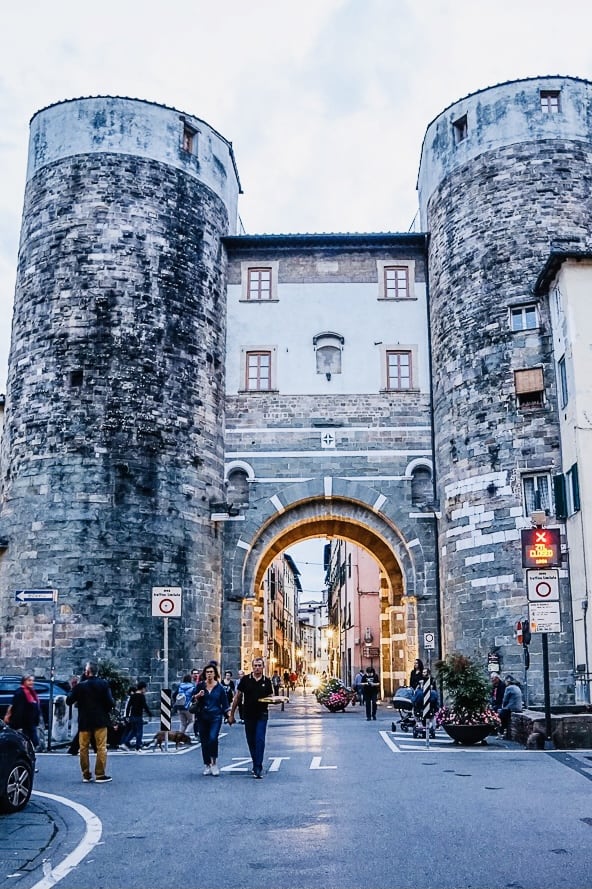
LUCCA, Italy – The road from Rome to Lucca takes in a different slice of Tuscany you don’t see in tourist posters. No less beautiful, western Tuscany isn’t a patchwork of grapevines shining in the sun with rolling green hills peeking out from morning fog.
We had a great lunch (I apologize. That phrase in Italy is redundant.) just outside Grosseto’s walled historical center. Once we passed the exit for the gritty port town of Piombino, the jump-off point for Napoleon’s “prison paradise” of Elba, we drove along the calm, cobalt Tyrrhenian Sea. It was still summer weather here in October, thanks to global warming and Tuscany’s odd, remarkable ability to be sunny every day of every year.
We went by the seafood paradise of Leghorn (the weird English translation of Livorno) then cut inland along the beautiful regional park of Migliarino San Rossore Massaciuccoli. We drove through Pisa and its tens of thousands of students but didn’t bother seeing its famed Leaning Tower. We were in a hurry to reach our halfway point to our targeted destination of Le Langhe the next day.
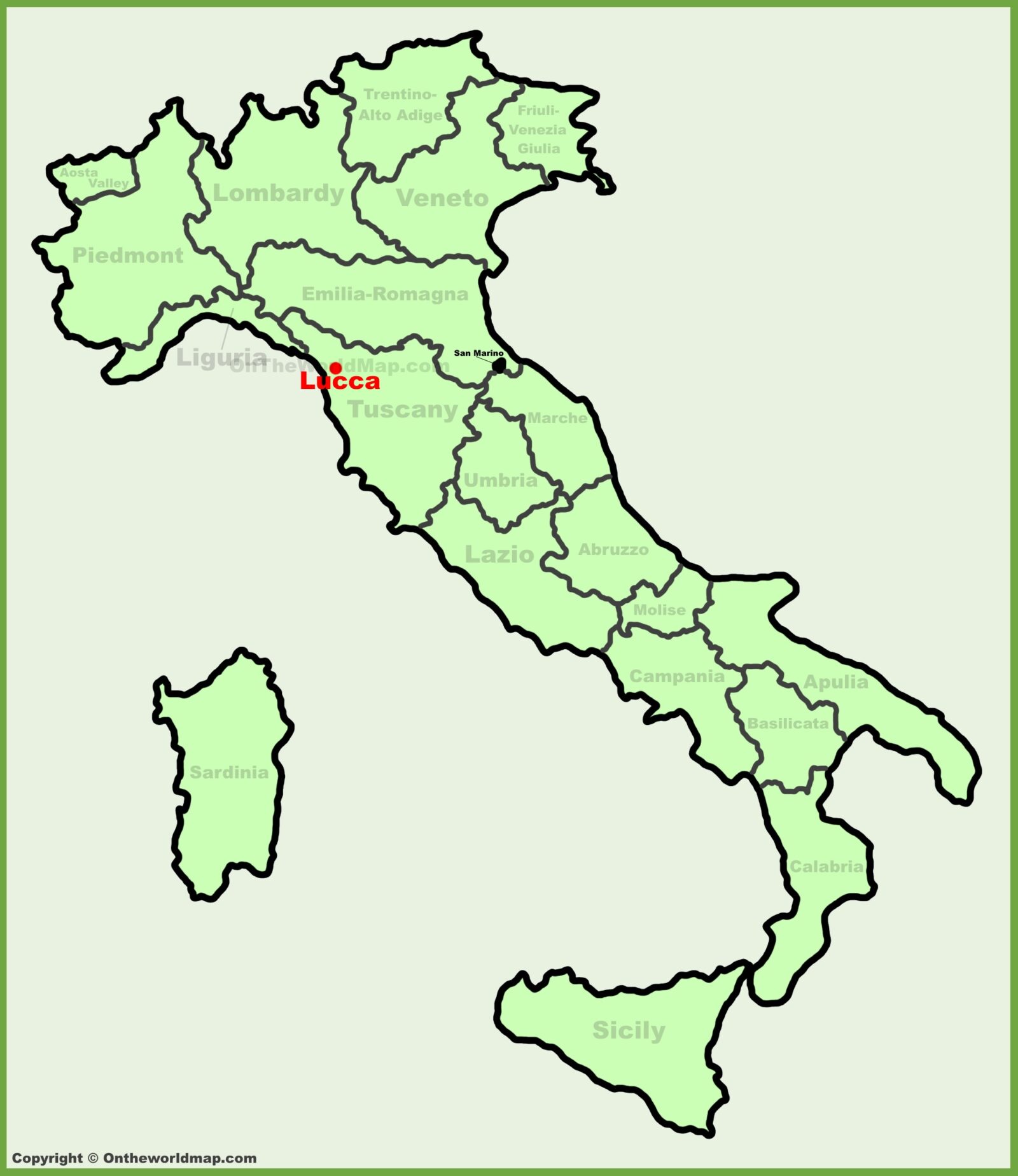
Lucca (pop. 90,000) shouldn’t be discarded as a halfway point. It’s a day trip from Florence at worst and a retirement destination at best. I cheated myself for using it as nothing more than a place to crash midway through a 7 ½-hour drive.
I did this once in Bakersfield. You don’t do it in Lucca.
For more than 10 years over two stints living in Rome I’d heard glowing stories about Lucca. Tourists came down gobsmacked about this walled city of silk and classical music. I covered cycling for 10 years for The Denver Post, and Colorado cyclist Taylor Phinney regaled me with stories about his training base here. Mario Cipollini, the Italian cycling legend and Grand Tour heartthrob, is a Luccan.
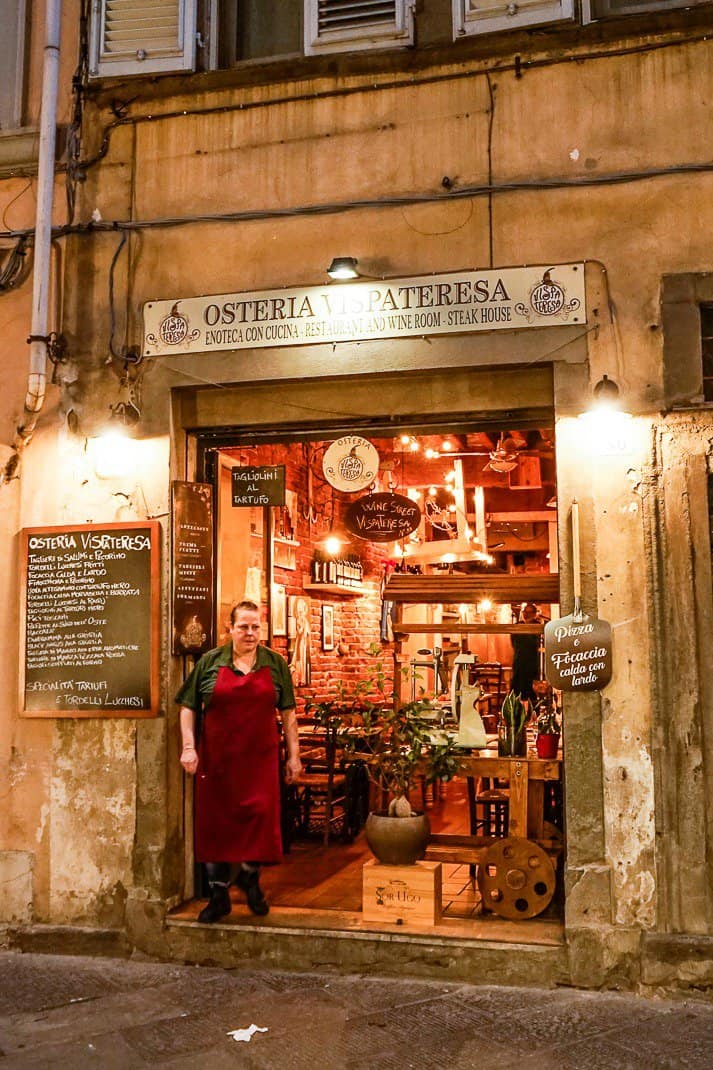
It doesn’t take long to see the one thing that draws hundreds of thousands of tourists every year. Five minutes after hitting Lucca’s outskirts we were staring at …
… the walls.
Many cities in Italy are walled. They’re left over from medieval times and the Middle Ages when every town was its own city state and they needed high, strong walls for defense.

Lucca’s walls
But Lucca’s stone and brick walls are special. They may be Italy’s most famous. They’re 2 ½ miles (4 kilometers) long, 40 feet (12 meters) high and 35 feet (10 meters) wide at the top. We climbed the long staircase and saw people riding their bikes along a path as wide as a three-lane road. Lovers walked arm and arm. They sat on the plethora of benches among gold and red leaves glistening in the sun.
Built in the 16th and 17th centuries, the walls are the best Renaissance fortifications in Europe. They replaced two walls, one from the 2nd century B.C., and are symbols of the independence that Lucca still displays today. They were built for defense as the Republic of Lucca feared an expansion from the Republic of Florence just 50 miles (95 kilometers) to the east.
This fuck-you fence worked. Florence never attacked and Lucca became Italy’s second largest city state after Venice to remain independent throughout the centuries.
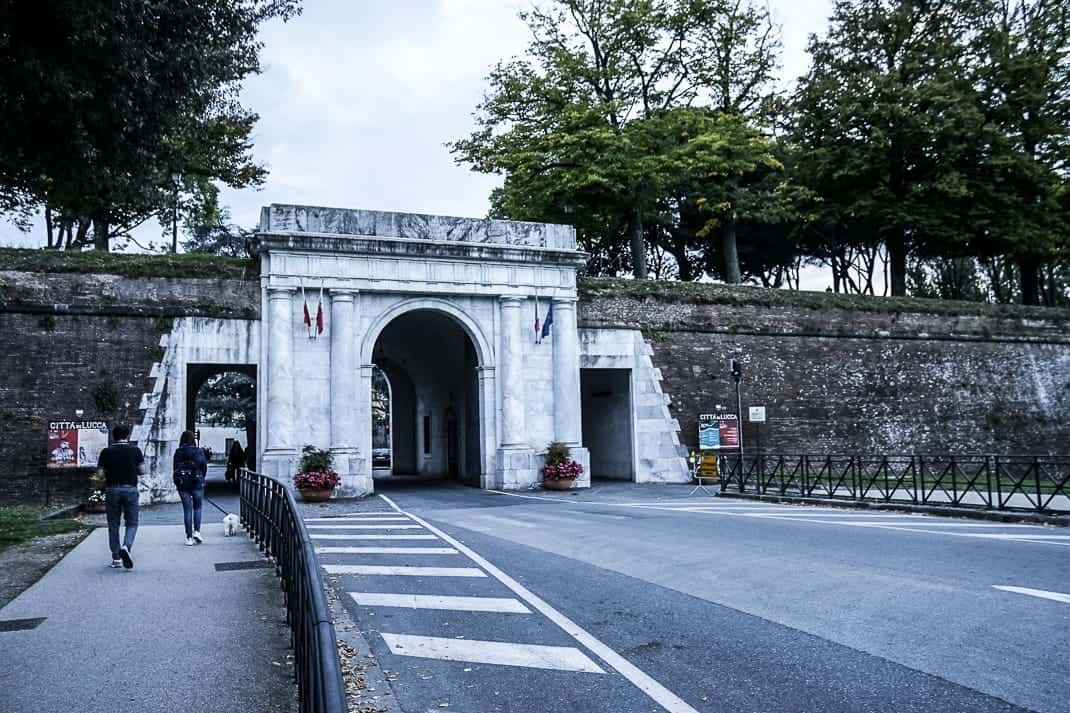
It still has that independent air to it. What other town hosts 300,000 visitors for a comic book convention and one of its best restaurant’s house wine is called “Vino del Cazzo (Cock Wine)”?
Ah, Lucca … you had me at Vino del Cazzo.
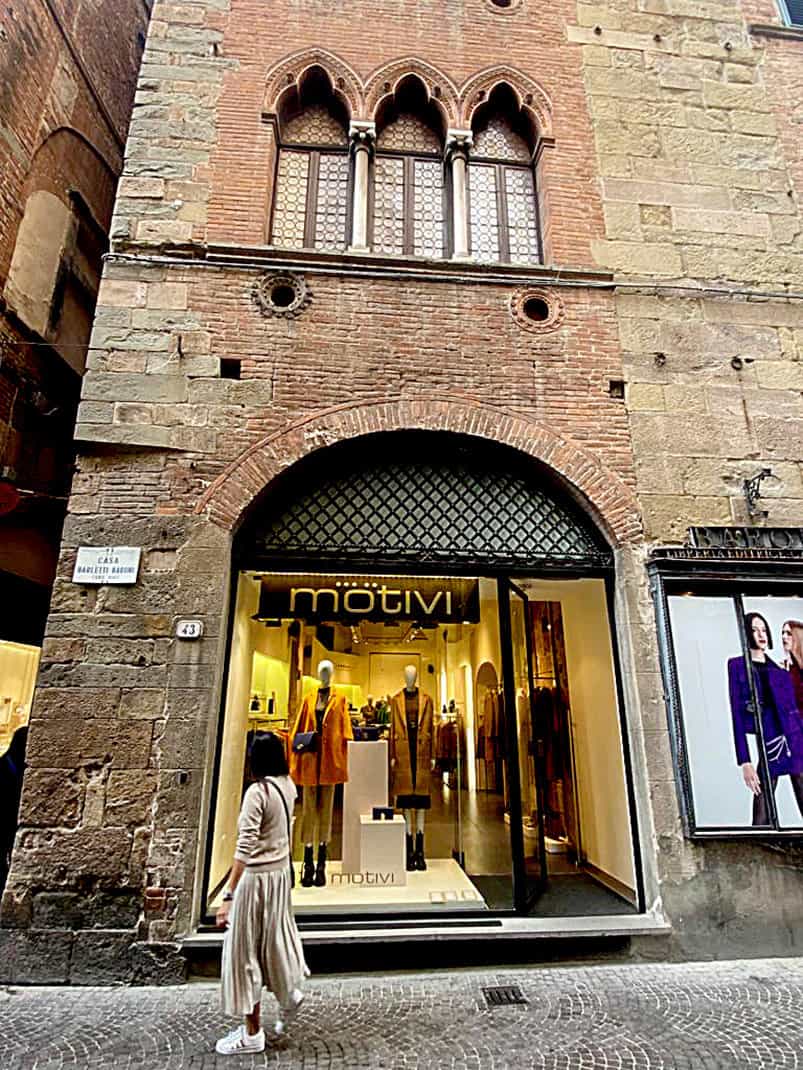
Lucca historical center
The walled historical center has eight main gates, huge archways that take you from medieval Italy to the modern, commercial center of one of the thriving cities in Italy. We passed brand name stores we could find in Milan and Rome. Max & Co. Franco Montanelli. United Colors of Benetton. Luna Piena. Motivi.
Wine shops were on nearly every corner selling not only the rainbow-length array of Tuscan wines but also Lucchesi, the famed local red wine favored by the medieval lords of Lucca, Florence and Pisa. People sat on the cobblestones with glasses of purple, red and gold in slivers of sun as evening began to descend.
But what’s this about getting away from crowds?
Part of Lucca’s alleged appeal is it’s a haven to get away from the mobs of Florence, Pisa and the wineries of Chianti. In our two days in mid-October, the walled city was packed. We heard American English as much as Tuscan Italian. Restaurants were booked. Enotecas were full.
It felt like Cinque Terre in July.
And it’s only worse now. As you’re reading this, Lucca is ending its five-day Lucca Comics & Games festival, the second-largest in the world, in which 300,000 people poured in to see whose comic will become the next over-hyped Hollywood movie.
However, our safe haven our first night was a restaurant called Ristorante all’Olivo. On a quiet side street off the tourist trail, the elegantly decorated outdoor tables with red candles sit under two huge umbrellas. It was 8 p.m. and still 68 degrees.
Tuscany is home to the best steaks in Italy and this one didn’t disappoint. A big slab of juicy, lean beef, next to Il Latini in Florence, this was the best steak I’ve had in Italy. But I drank Chianti, not Vino del Cazzo.
Exploring the charming city of Lucca, whether strolling beneath its ancient walls or enjoying a cup of espresso in its bustling piazza, every journey is filled with unique experiences and cherished memories. To make these moments last forever, PVC Patches can create a unique travel souvenir.
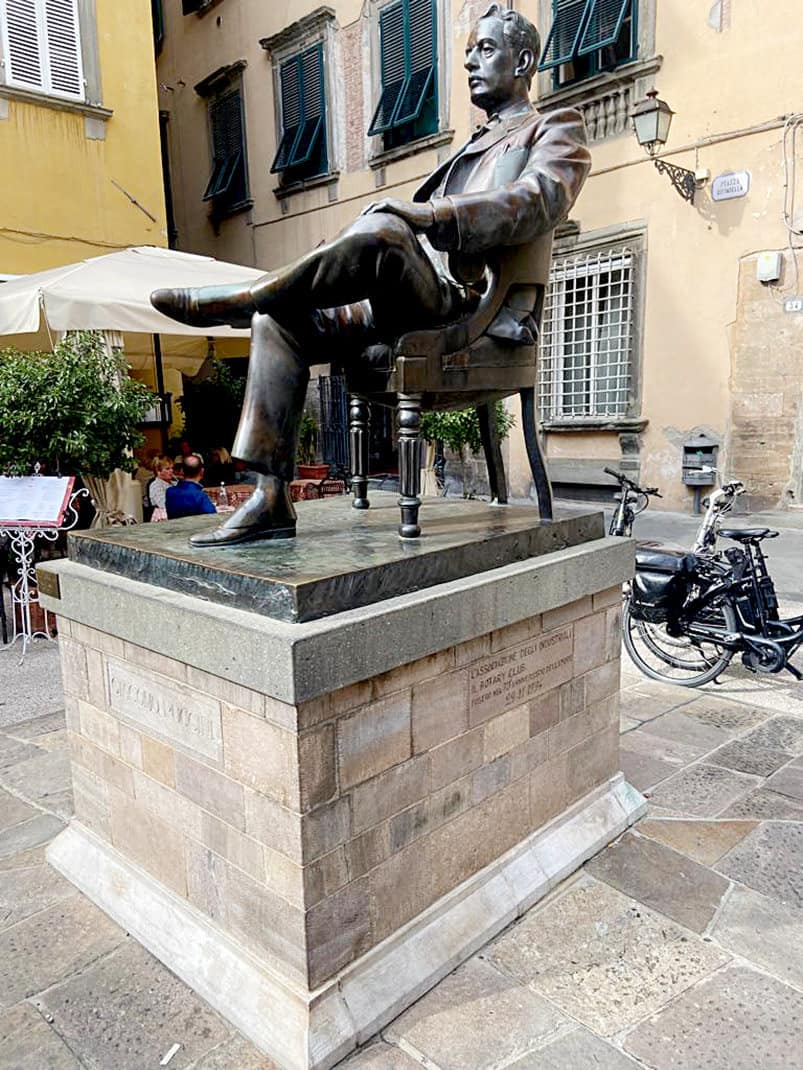
Walking tour
As I’ve gotten older I’ve dropped my backpacker pretentiousness and do more guided tours. I lean toward walking city tours. They’re a good way to get a quick bearing on a city before a deeper dive. I’ve done them in Reykjavik, Tbilisi, Sofia, Brno and Palma de Mallorca. They’re good.
They’re especially helpful if you have only eight hours in town.
On our second layover in Lucca, with my eight bottles of Langhe wine hidden in our room, I met a group of about 25 people in Piazzale Verdi. It sits right outside the wall. The Lucca-raised tour guide, Gabrielle Faraone, started by emphasizing Lucca’s independence.
“This is the only town to be detached from the Grand Duchy of Tuscany ruled by the Medici family,” she said. “So the Medicis managed to conquer all the Tuscan towns since 1400. They (Medicis) didn’t accept to be lorded by Florence. They wanted to be more important.”
She explained that the Medicis weren’t noble, or an aristocratic social class just below royalty. So they went out and conquered nearly all of Tuscany.
“Any person now can be the first prime minister,” she said. “But at the time it was impossible. Without the noble title you were nothing. Otherwise you could be successful in a military career, become a police captain. Then you could be famous.
“But not noble.”
The most notable points of interest on the tour, or can’t-miss sees if you are in Lucca:
Puccini Statue: Giacomo Puccini (1858-1924) is Lucca born and raised and considered Italy’s greatest composer after Verdi. Puccini wrote “La Boheme,” “Madame Butterfly” and “Tosca.” He was a workaholic, a ladies man and a legend in his own time.
There is a statue of him relaxing in a chair, one leg resting on the other, as if he’s watching one of his works, among the greatest in the history of opera. The only thing missing is a cigarette hanging from his mouth. He smoked 80 a day, racked with pressure from a panting public and himself. He died of throat cancer at 66.
The statue is in Piazza Cittadella near the apartment where he was born but he used his wealth to buy many villas. After his death, they returned his piano from a villa to the apartment on Piazza Cittadella.
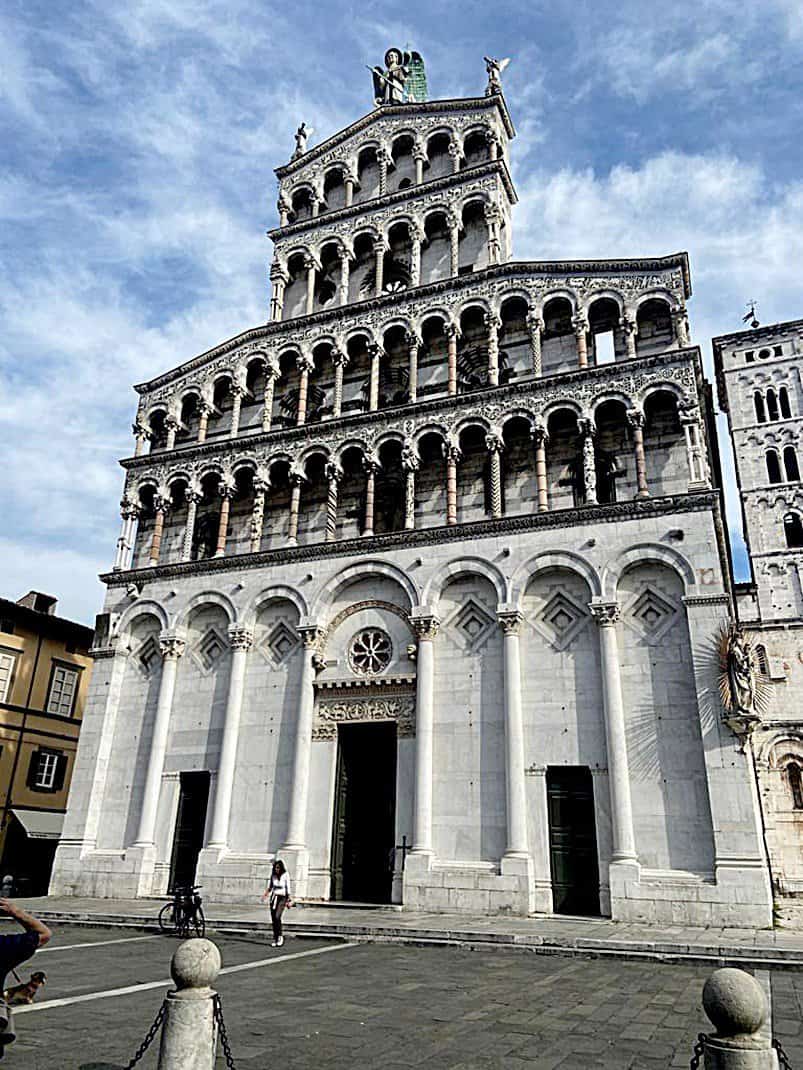
Church of St. Michael: A short walk away is a towering multi-columned 11th century church. St. Michael sports 44 columns, each with a different religious symbol.
Standing atop the four rows of columns stands a nine-foot statue of St. Michael. He’s killing a dragon and flanked by two angels trumpeting the victory.
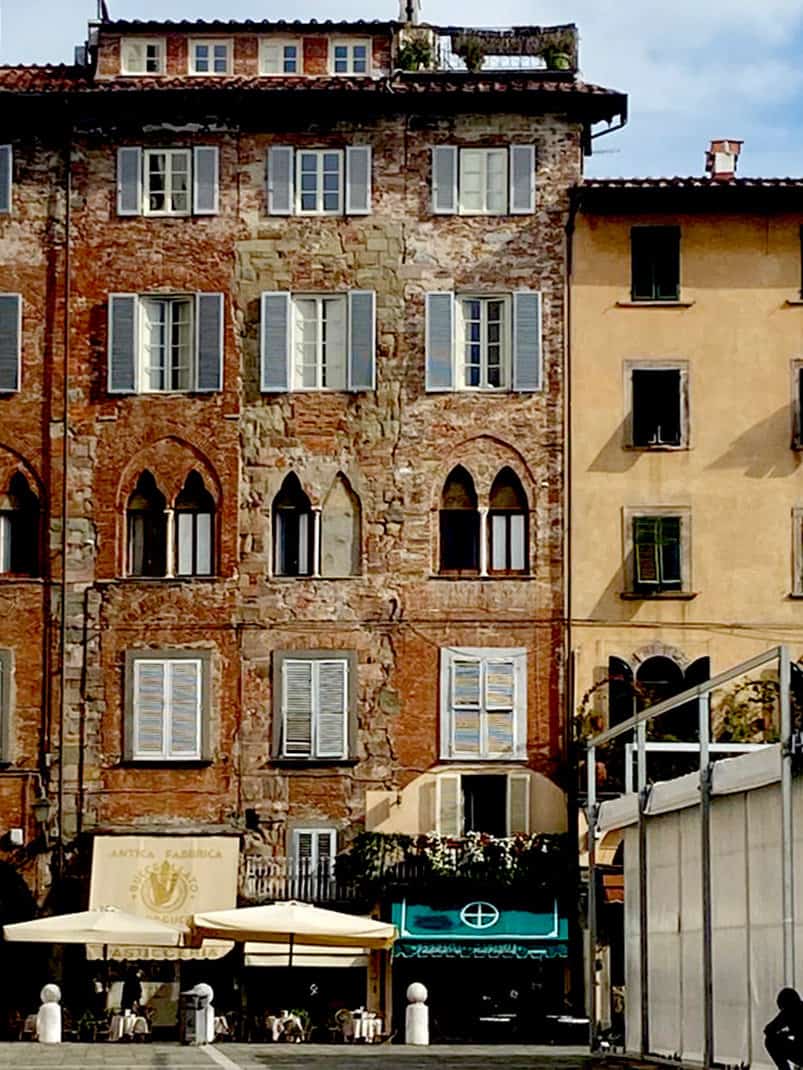
What I found even more interesting were the windows of the surrounding buildings. They’re shaped like the silhouettes of little mosques, windows still famous in North Africa. Lucca built much of its wealth through trading for silk with Middle Eastern countries. In medieval times, Lucca had 3,000 looms which gave the city its wealth and independence.
The windows have been perfectly preserved.
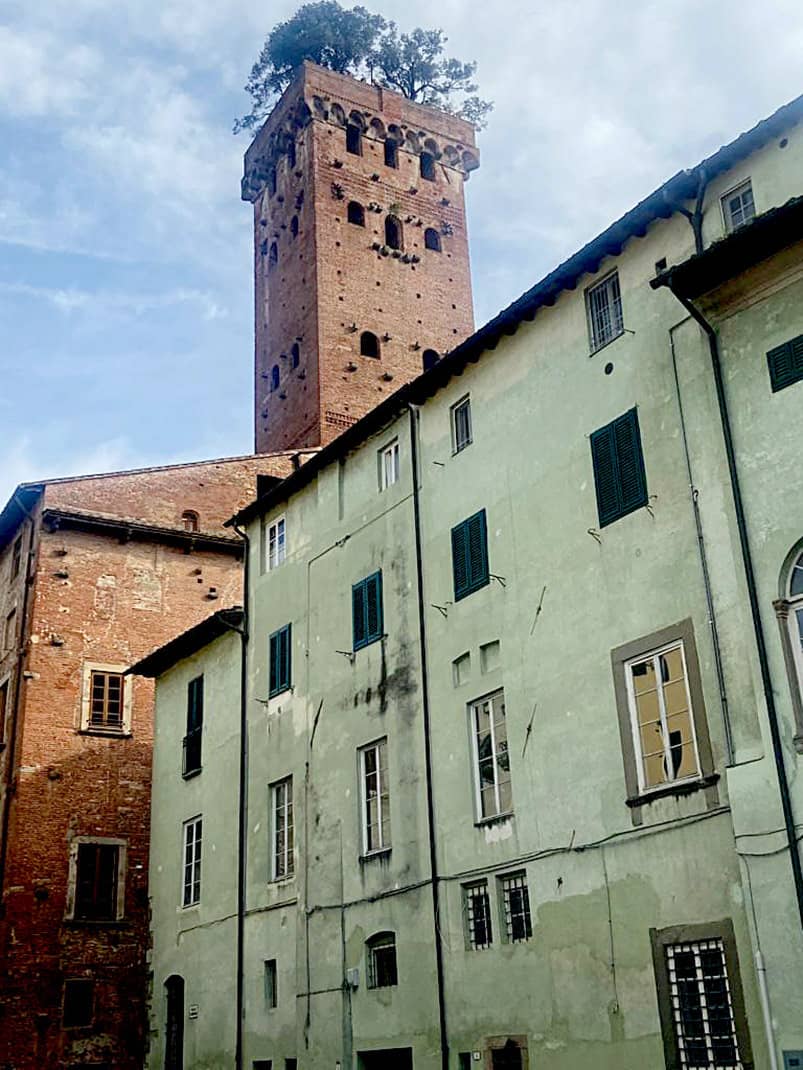
Torre Guinigi: Want some exercise? Climb the 240 steps to the top of this 150-foot (45-meter) red-brick tower built by rich silk merchants in 1384. At the time, about 250 similar towers were built during a time when Tuscany was a disaster. Plague. Raids. Violence. Political corruption.
The towers were not only used for defense but also for status. Only nine towers remain but Torre Guinigi stands out for the seven huge oak trees providing shade for one of the best vistas in Tuscany.
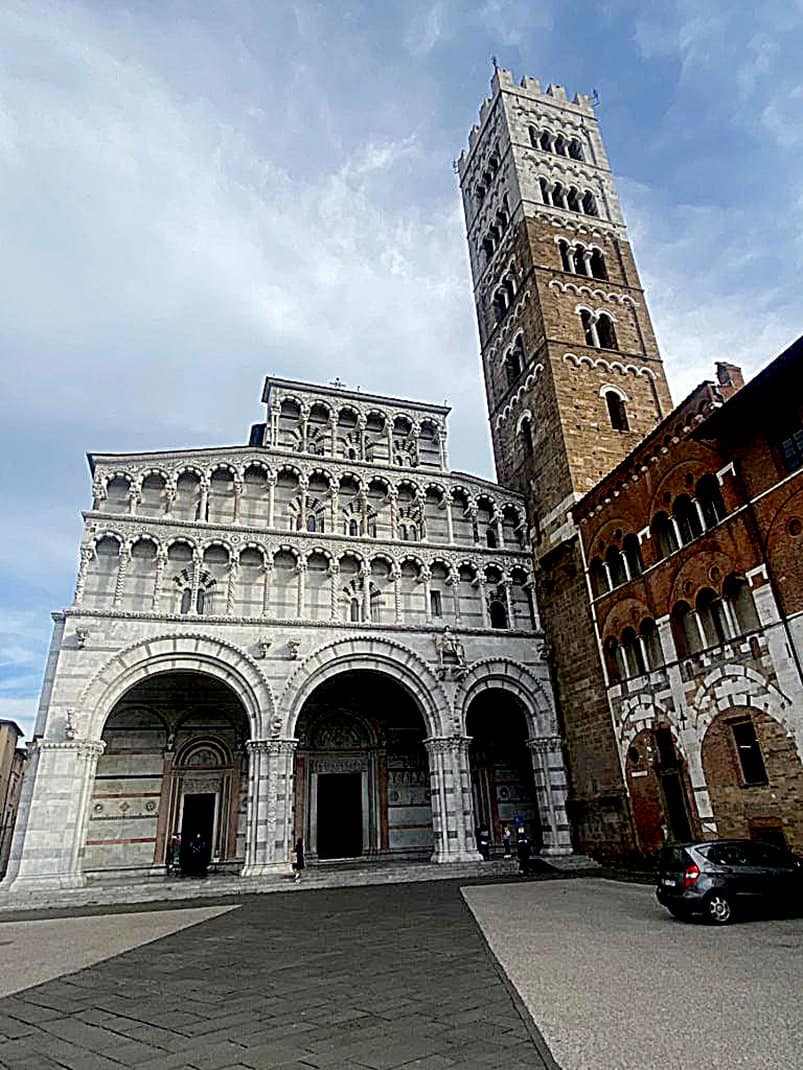
Cathedral of San Martin: I didn’t climb Guinigi. Instead, I walked farther to Lucca’s massive 11th century landmark. Made of marble, Cathedral of San Martin was constructed in a space so cramped, one of the three arch entryways had to be made smaller than the others. It’s squeezed between the central archway and the 200-foot-tall (60 meters) bell tower.
The 37 columns, separated on three rows, are all different. Local legend has it that the Luccans held a contest for the best-decorated column. But instead, they stiffed all the artists and used all of the designs.
If you look at the far right arch is a diagram of a labyrinth. It’s from the 12th century and came before the famous Chartres labyrinth that became the model for rats mazes forevermore.
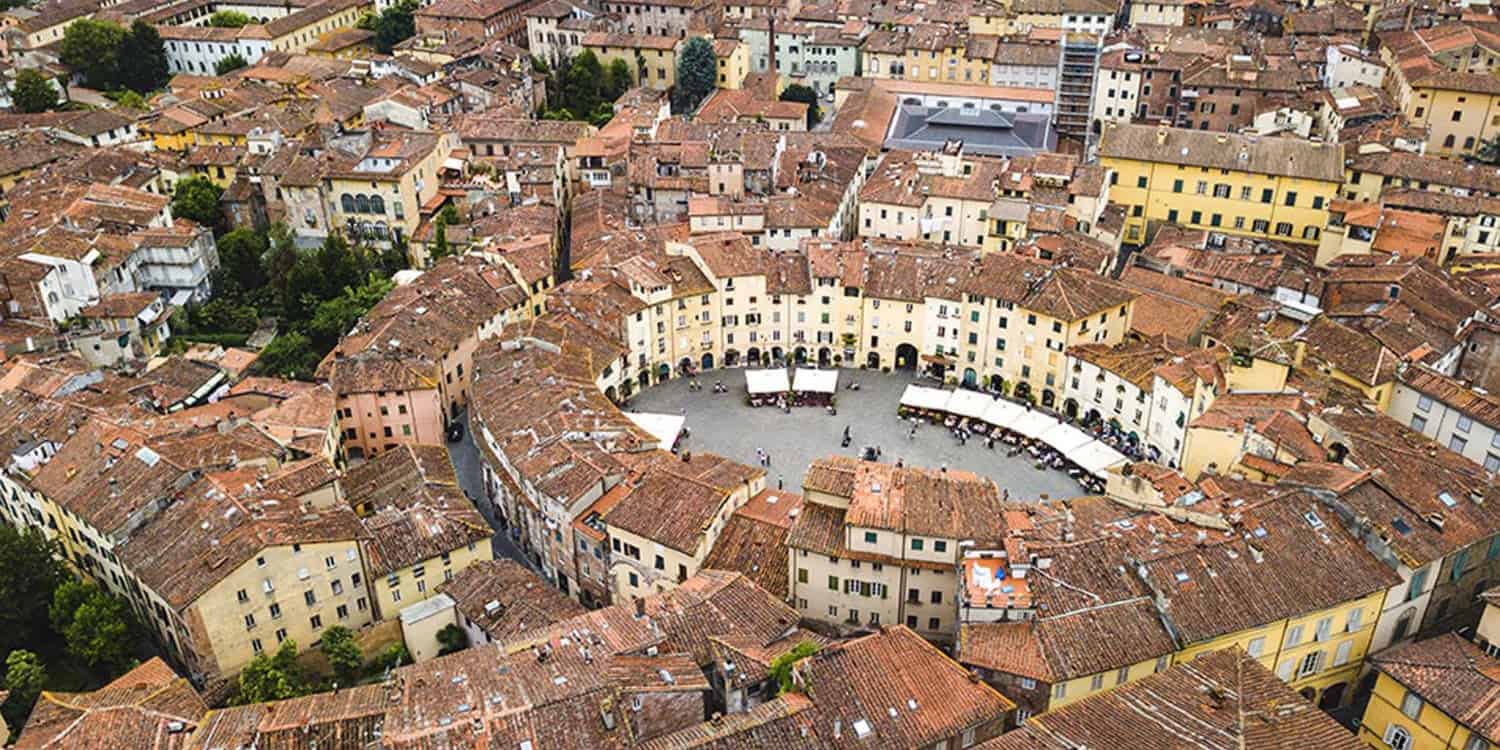
Piazza dell’Anfiteatro: Lucca’s historical center has a pleasant mix of ancient and Italian chic. The prettiest street in town is Via Anfiteatro, a narrow, pedestrian-friendly alley lined with outdoor cafes and trattorias. It leads to Lucca’s most famous piazza.
Unlike most piazzas in Italy, Piazza dell’Anfiteatro is round, not square. It was built upon the site of a Roman amphitheater which itself was round. It dates back to the 2nd century B.C. and at one time featured 18 rows that seated about 10,000 people.
It later became a marketplace and Via Anfiteatro often resembled a long, narrow garbage dump. Potatoes and vegetables were squished into the cobblestones. In 1830, architect Lorenzo Nottolini knocked down some buildings inside the piazza. The market closed and soon the piazza and street became one of the most romantic, pleasant places in Tuscany.
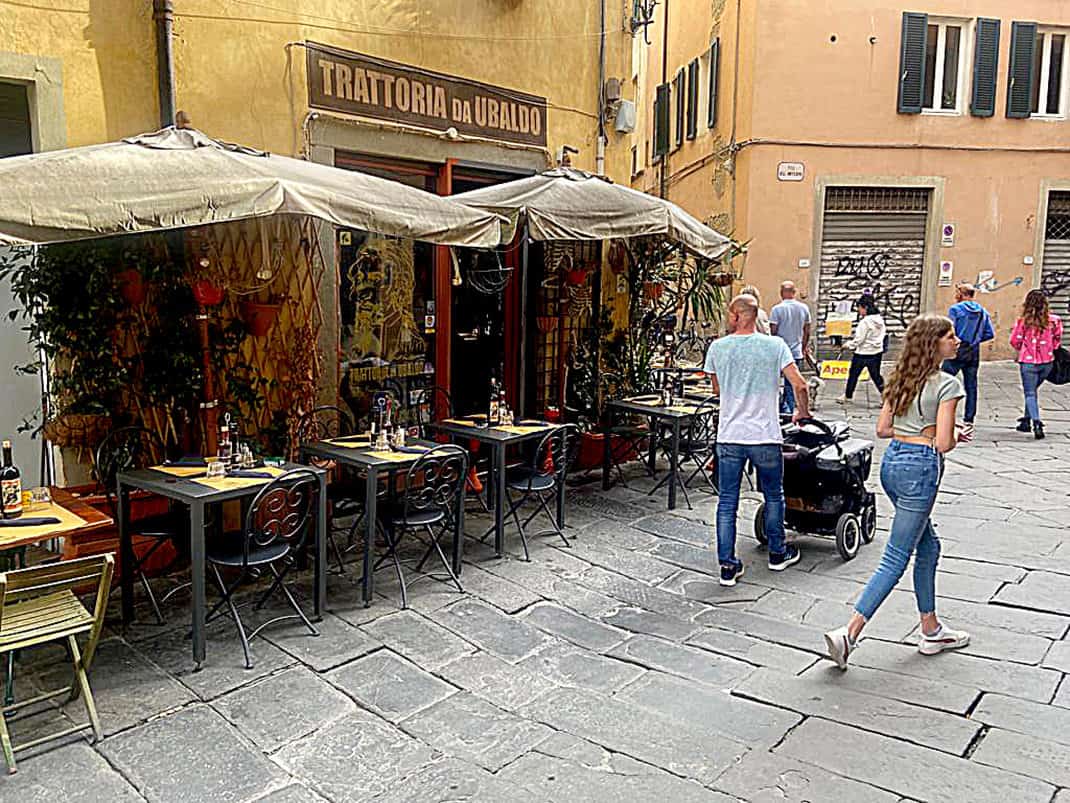
Which brought us to one of the gastronomic highlights of our week.
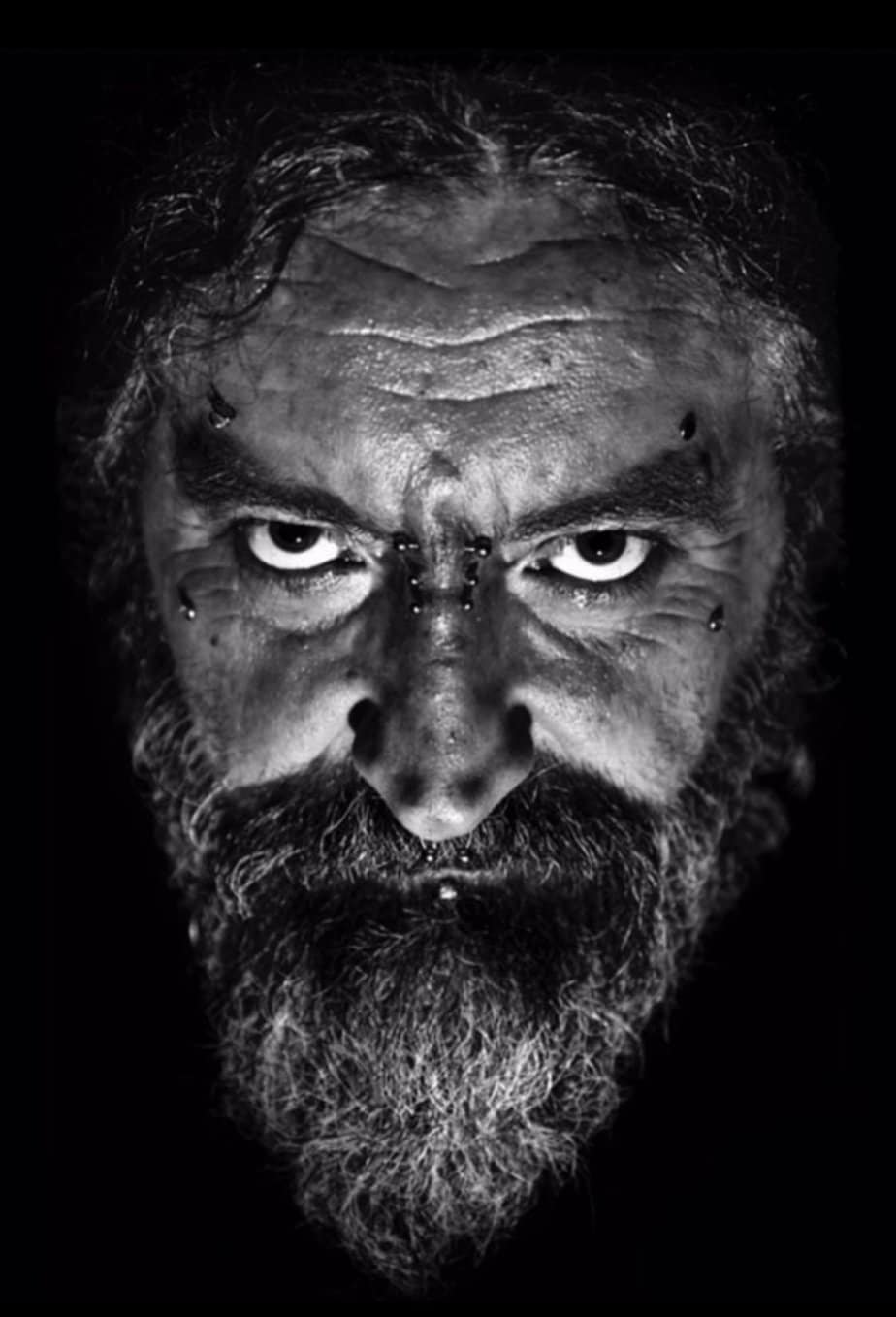
Trattoria da Ubaldo
Via Amfiteatro looked like the ideal place for the last meal of our trip. In fact, Gabriela recommended it as one of the best zones for authentic Tuscan food. She particularly liked a friendly looking place with ample outside seating called Trattoria da Ubaldo.
Marina and I took an outside table, each one sporting a bottle of the house wine. Hmm. What kind of house wine do they serve here? Sangiovese is Tuscany’s predominant grape. Chianti? Maybe the local Lucchesi. I read the label.
Vino del Cazzo.

Cock wine. Ok, what exactly is IN this vintage? It sports a photo of a fiery man with long hair and beard and a piercing glare that could knock down Lucca’s walls. The friendly waiter said we’re charged by how much we drink. I tried a glass.
It was good. Pure 100 percent Sangiovese. In fact, so was my tordelli caserecci all’affumicata (small, round pasta rings covered in sauce of smoked cheese and bacon). I went inside the packed restaurant to pay the bill and compliment the owner.
It was the man on the wine label. His face had numerous piercings but had the friendly nature of a nightclub owner. Later, I called him and talked about his trattoria and his, um, odd marketing strategy. Talk about independent. This guy is Lucca’s lone wolf and looks the part.
A Lucca native, Ubaldo Buralli’s father opened a trattoria with his brothers in 1980. Ubaldo worked with them for 35 years. Then he married, had three kids and his father-in-law found this lot where Ubaldo opened the trattoria with his wife in 2012.
“Then I let my creativity go wild,” he said in Italian. “I’m someone who enjoys doing what I like without having to answer to anyone.”
I asked about Vino del Cazzo. I knew what it meant. I wanted his description.
“Dick wine,” he said without laughting. “When I had to decide on a house wine, when I was at home, I tried to impersonate both the clients and the owner. ‘Bring me some vino del cazzo!’ (Note: “Cazzo” also means “Goddamn” as in “Bring me some goddamn wine!”) I like how the impression sounded. I took the chance because I thought it would be good publicity.
“And I thought, Well, if it works, brilliant. If it doesn’t, I’ll dig my grave.”

It worked. He’s received tons of exposure and you need a reservation every night. Also, while you’re there, you might want to pick up a jar of his son’s marmalade, emblazoned with the Trattoria da Ubaldo label and an image of a large, erect penis.
I did not ask what flavor.
After dinner, Marina and I wandered into Piazza dell’Anfiteatro. The “square” was ringed with soft lights painting the yellow buildings almost gold. The sky was as black as an underground cave. It was still in the high 60s.
The perfect nightcap to the perfect Italian week.

If you’re thinking of going?
How to get there: Numerous trains leave daily from Florence to Lucca. The 1-hour, 50-minute ride starts at €8.10 one way. Numerous trains taking the 3 ½-hour trip from Rome start at €38.
Where to stay: Villa Lucrezia, Viale Luigi Cadorna 30, 39-05-839-54286. Beautiful, spacious rooms in a building set back from the street less than 100 meters from the wall. I paid €94.50 for one night.
Where to eat: Trattoria da Ubaldo, Via Anfiteatro 67, 05-830-82483, (3) Trattoria da Ubaldo | Lucca | Facebook, trattoriadaubaldo@gmail.com, noon-3:30 p.m., 7:15-11:30 p.m. Excellent Tuscan cuisine at good prices. I paid €47 for two with lots of house wine!
Ristorante all’Olivo, Piazza San Quirico 1, 39-05-83-496-264, All’Olivo Restaurant Lucca ~ Ristorante All’Olivo Lucca (ristoranteolivo.it), info@ristoranteolivo.it, 12:30-3:30 p.m., 7-10:30 p.m. The place to go for Tuscan meats in romantic setting. Meat and fish dishes start at €20, pasta dishes at €14.
When to go: As I tell everyone, avoid Italy in July and August. October is ideal with temperatures from 50s to high 60s. Nights in January and February dip into mid-30s.
More information: Tourist Office, Piazzale Verdi, 39-05-835-3150, www.turismo.lucca.it, 9:30 a.m.-4:30 p.m. Gabrielle Faraone, licenced tour guide for Lucca and Pisa, gabriellefaraone@gmail.com.


November 1, 2022 @ 8:04 pm
Think you came to the wrong place?
November 2, 2022 @ 6:23 am
I love Lucca! Our apartment is in nearby Bagni di Lucca and I go to Lucca at least once a week,
This year the crowds are as big as I have ever seen them in 20 years.
I was in Rome last week on my way back to Australia and I was shocked at the number of people there.
I hope things return to normal busy seasons when we have a few months a year without hordes of tourists.
November 2, 2022 @ 2:13 pm
John, you’ve given a perfect description of Lucca! I’m forwarding this to all my friends who’ve heard Tim and I sing Lucca’s praises for years. In my next life I’m coming back as a Lucchese. btw, we were in Lucca for all of September and didn’t feel the number of tourists was oppressive, but then again, that was a month before the Comics and Games festival… (N.B. Should you pass through Lucca again, try Trattoria da Giulio in Pelleria, great food in a beautiful surroundings, and Ristorante al Corso, very creative takes on Tuscan food.
November 3, 2022 @ 12:29 am
My wife and visited Lucca several years ago and loved it.
January 8, 2024 @ 8:33 pm
Bella Roba John, ti sono Grato io e Mia Moglie delle foto scattate e di quello che racconti.
Tenchiù veri mach ✌️
Alla prossima che capiterai a Lucca.
Bai bai.
January 16, 2024 @ 5:57 am
Prego, Ubaldo.
A presto,
John